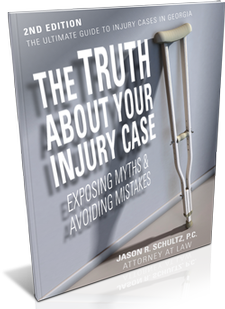Back Blind Spot on a Truck
This area leaves both you and the truck driver blind. You cannot see what is on the road ahead, so you have little time to react if the truck swerves or slows quickly. The rig driver cannot see you through the trailer. Many people do not realize that a truck’s rear blind spot can extend up to 100 feet behind the back of the trailer.
While that number sounds surprising, Consumer Reports says passenger cars can have rear blind spots up to 24 feet, SUVs up to 31 feet, and pickup trucks up to 50 feet. The longer the vehicle, the larger the blind spot.
Left Side Blind Spot on a Truck
The driver can only see you if you are even with the cab or the driver’s side door. If you are driving alongside the truck at other spots, the driver will be unlikely to see you, especially in the front half of the trailer.
Right Side Blind Spot on a Truck
The right side of a truck is no man’s land. Not only can the truck driver not see you at all if you are riding alongside on the right, the driver also cannot see the people in the lanes on your right. A tractor trailer’s right side blind spot can include three entire lanes to the right of the truck.
How Can You Avoid a Semi-Truck's Blind Spots?
The Federal Motor Carrier Safety Administration (FMCSA) warns drivers to stay out of all four blind spots of large trucks. FMCSA calls these “No Zones.” It also urges extra caution when cars and trucks are passing each other. FMCSA offers this tip: “If you can’t see the truck driver in his or her side mirrors, the truck driver can’t see you.”
If you are in the lane to the left of a truck, you should not cruise alongside the truck. Either stay even with the front half of the truck cab or lag well behind the truck and one lane over to the left.
If you are in the same lane as a truck, you should stay more than 20 feet in front or more than 30 feet behind the truck, according to the FMCSA. Be aware that some experts recommend staying at least 100 feet behind large trucks. Never tailgate a truck. If a truck tailgates you, change lanes as soon as it is safe to do so.
While in the lanes to the right of a truck, the only safe spot for the lane next to the truck is at least 30 feet behind the truck. If you are two lanes to the right of the rig, you can avoid the truck’s blind spots by staying slightly ahead of the truck or at least 20 feet back.
Never pass a truck on the right. You could end up with catastrophic injuries from a squeeze play accident (i.e., when the truck makes a right turn and crushes you between the trailer and the shoulder, another car, a wall, etc.). If the truck is moving too slowly and you need to pass it, safely change lanes behind the truck and pass on the left.
When changing lanes in front of a truck, ensure you can see the entire cab in your mirror before changing lanes. Once you have pulled in front of the truck, maintain speed to avoid ending up in the front blind spot.
And remember, trucks also have limited visibility when they are turning, backing up, or changing lanes, according to the FMCSA. You should give the vehicle wide berth in these situations.
Call Jason R. Schultz After A Truck Accident
If you suffered injuries in a truck accident, you may have a claim for your injuries. Call the Law Office of Jason R. Schultz, P.C. today at 404-474-0804, and we will set up your free, no-obligation consultation.


